What is an awning?
An awning is an outdoor sun protection system that prevents the room from overheating. The main material used in the manufacture of an awning is fabric. For the most part, awnings are structures that do not have supporting legs.
Yes, they are generally not necessary, as these types of structures were originally designed to be installed on the wall of a building.
This is their main advantage. Automatic awnings are distinguished by the presence of a folding mechanism.
An awning is a retractable sun protection for terraces, balconies and other outdoor spaces. There are different types.
Some are specifically designed for balconies or winter gardens. Compared to simple awnings, awnings offer many advantages.
For example, they can be retracted and extended at the push of a button or a crank, which keeps the fabric protected from the weather.
In addition, there are many models for which no supports are required and which can also be used on a small balcony or terrace.
Here I show you more types of awnings available on this website:
What does the word awning mean?
The word “awning” comes from French and means “marquise”. However, it is not entirely clear why today’s awnings bear this name.
From around 1700, awning also meant “over tent” or “additional tent roof”. In the mid-18th century, the term was a “linen sun canopy in front of a window or door”.
An awning was also created as one of the simplest and at the same time original means of sun protection, creating shade without restricting visibility.
The awning perfectly protects everything underneath from the sun’s rays, but also creates shade over windows or doors, providing a pleasant indoor climate.
As a rule, the awning is mounted on a sliding frame attached to the wall of the building.
Depending on the chosen version of the awning, it can be lowered, reclined or dismantled. And as a result of these actions, a shade will be formed which, as a result, will be a protection against the sun. This principle of operation differs from the well-known principle of roller blinds and roller shutters.
In most cases, the system is installed only once and then, in the cold season, the awning is simply folded up. The awning is mounted with special brackets.
The awning frame is made of aluminium, which is not subject to corrosion and is lightweight. The maximum height of the awning, as well as its removal from the building wall, is 120 cm, and the maximum width can be up to 4 m.
Questions to ask yourself before buying an awning.
First of all, you need to make sure that you can fit an awning where you want it. If this is not permitted, the only awnings in question are those that can be installed without drilling, such as clip-on awnings. In the next step, you can think about the area to be shaded and how large the awning should be accordingly.
But you might also consider whether you prefer a motorised or manual awning – perhaps you also want additional functions, such as a wind sensor?
It is also important to be clear about the loads the awning will be exposed to. In the following, we will look at the different types of awnings so that you can find out which type of awning is best for you.
In this link I help you to find out more about your awning through our awning ideas blog articles.
Not every wall can support an awning, which sometimes weighs up to 250 kg. Therefore, an insurmountable obstacle for the installation of such an awning can be a thin outer facade cladding with a thick layer of insulation underneath (50 mm or more).
Therefore, before deciding to buy an awning, it is necessary to consult a specialist. It would not hurt to study the plan of a residential building to identify hidden electrical wiring, internal drainage systems, etc., to avoid damage during installation.
In summer, exposure to direct sunlight is not always pleasant for a person; shelter should be sought in every possible way.
Advantages of buying an awning.
Who doesn’t want to sit outside in summer with friends or family in a cosy atmosphere? However, the sun can heat up too quickly and there are not always shady spots.
The solution is awnings, which can even change the angle of inclination depending on the position of the sun. With a weatherproof awning, you won’t have to go inside when it rains.
Indoors, thick curtains, blinds or air conditioning can be used, but outdoor awnings serve as the most functional sun shading system. Special awnings can create a shade curtain over a large area.
Thanks to professional design developments, awnings can be harmoniously combined with the existing architectural style and decorate the façade of the building near which they are installed. The undeniable advantages of canopies include the following:
- Multifunctionality.
- Easy to transport.
- Light weight.
- Colour fastness when exposed to sunlight.
- Waterproof.
- Durability.
- Fire safety.
- Resistance to mechanical damage.
The main function of street canopies is to protect a person while working or relaxing outdoors from sun, rain, wind and snow.
The special fabric from which the awnings are made is very durable, resistant to temperature changes and therefore retains its original appearance and colour for many years.
How are awnings classified?
When it comes to the classification of outdoor sun shading systems, for example, depending on the location, they are divided into window, balcony, terrace and pergola, and all have their own special design.
Window awnings include roller awnings (a shaft with fabric and guides like a roller blind), basket awnings (similar to a basket, folding and stationary), facade awnings (one part of the structure is located along the window and the other part forms a visor from below – awning) and so-called viewing windows (in the form of a visor on brackets).
Balcony systems are retractable inclined awnings, which are equipped with an additional longitudinal beam. It raises the canopy exactly in the middle to a height of 100-150 mm.
The result is a kind of light gable roof over an open balcony. This design, in addition to ease of use, also provides optimum fabric tension, preventing the fabric from sagging.
The extension of the awning outlet is 1.5 to 5 m, with the exception of pergola structures and winter garden systems, which are 6 and 7 m respectively.
What types of awnings are there?
To help you find out which type of awning suits your living conditions, here are the most common variants:
- Hinged arm awnings.
- Folding arm awnings.
- Independent awnings.
- Complete and semi-cassette awnings.
- Cable tensioning awnings.
- Awnings for pergolas.
- Conservatory awnings.
- Canopy awnings.
- Side or vertical awnings.
In this link you have much more detailed
the types of awnings that exist.
Hinged arm awnings.
The articulated arm awning is supported by two or more articulated arms that are connected with a spring or a fabric shaft. It can retract or extend the fabric.
Articulated arm awnings are available with both motor and crank and can only be mounted on the walls or balconies of the house. You can change the angle of inclination to allow rainwater to drain away.
Drop-arm awnings.
Drop-arm awnings are simple and easy to install. You can attach them to the building structure without screwing them between the floor and the roof.
Because they are diagonally forward, plenty of natural light enters and the view of the surroundings remains unobstructed.
You can change the orientation of the folding arms to establish more acute and advantageous angles.
Drop-arm awnings are available with a rain cover or in a cassette to protect them from rain and dirt. They are available as clip-on awnings that can be easily positioned at the desired location.
You can also choose between folding arm awnings with gas-pressurised spring arms or single drop spring-assisted folding arm awnings. Like most types of awnings, they are motor or crank operated and have an adjustable tilt angle.
Freestanding awnings.
Freestanding awnings are installed with movable stone supports and a self-supporting support structure. This gives you the flexibility to choose the location and to mount and dismount the awning at any time.
In addition, you also have the option of fixing the awning to a wall or concreting it into the ground.
Drop-arm awnings not only provide good protection from the sun, but also from the rain. They are operated by a motor or a crank. You can vary the shade and the angle of the awning.
Full and half-covered awnings.
You can also buy folding arm awnings as full cassette awnings or half cassette awnings. In a full cassette awning, the cassette completely protects the folding arms, the fabric and the awning technology from dirt and rain.
Full cassette awnings are flatter and therefore more visually appealing than normal invisible arm awnings, but they are heavier.
Therefore, before installation, make sure that the ground can support the awning. As the size of a cassette awning can vary, you can use it for balconies, terraces or winter gardens.
Semi-cassette awnings protect the fabric, seams and technology at the front and top when retracted.
The visual disadvantage is that part of the fabric and the hinged arms are visible. However, they are protected in the same way as with a full cassette awning.
Awnings with cable tensioners.
This type of awning can be installed by yourself and can be used both indoors and outdoors. Two pieces of stainless steel stretched parallel to each other guide the awning.
The cover is made of a thinner fabric than other types of awnings, which means that it provides shade without darkening.
You can gather the awning together to protect it well from strong winds. It is possible to hang the awning at an angle to protect it from rain.
The options to hang the sail horizontally or vertically give you flexibility. You can move the sail with the pole, hand or rope tensioning method to achieve the desired sun protection.
If you hang it horizontally, you will need a glass cover to prevent water from accumulating when it rains. However, heat will also build up between the glass and the canopy.
Pergola awnings.
A pergola is an entrance with columns or pillars that protects from the sun between the terrace or garden and the house.
A pergola awning is suitable for you if you cannot install a folding arm awning or a cassette awning or if you need an overhang of more than 4 metres.
The pergola awning has an overhang of up to 6 metres. The straight or curved guide rails can be easily removed.
The awning is stabilised by front brackets which are attached to the mounting floor by two feet. The pergola awning is motor-driven. Optionally, you can equip your pergola awning with a frahling sensor or a remote control.
Conservatory awnings.
This type of awning is mounted on a winter garden with rails. You should definitely leave the complex installation to a professional.
As the awning is mounted from the outside, the sun does not shine on the glass. Conservatory awnings are always operated electronically.
Canopy awnings.
Canopy awnings are a combination of vertical and drop-arm awnings. While at the top they are vertically aligned and provide sun and privacy protection, at the bottom you can flexibly adjust the awnings to allow light to fall on them.
You also have the option of fixing the awning at a distance from the building or directly on top of it.
Side or vertical awnings.
Side awnings are mainly used on balconies and terraces. As they can often only be fully retracted, you should pay attention to the exact dimensions before purchasing.
Side awnings are not only intended to protect from the sun, but also to provide privacy and wind protection.
As they store heat, you can also use side awnings in winter. They are motor or crank operated. The side awning is especially designed for large, vertical or sloping facades.
It is suitable for public buildings such as schools, hospitals or office complexes, as it offers optimal privacy and sun protection.
What is the design of a pergola awning like?
Pergola awnings are a special category, as they require supports, so they have a larger span (length – up to 7 m) than other systems (maximum 5 m).
The design consists of a fabric roll on a horizontal axis and side guides with emphasis on the ground.
The canopy fabric moves along these guides as it opens, falling to the ground. Four fixing points (two on the wall and two on the ground) provide wind resistance to the awning. The only negative is that the guides are not removed when the panel is folded.
The most common awning designs include retractable (elbow) terrace systems. In this case, the canvas awning is pulled out of the roll with the help of folding brackets, such as arms bent at the elbow.
When opened, the ‘elbow’ unfolds and straightens the ‘arm’, which, when opened, pulls the fabric out of the roll. The length of the support when unfolded determines the length of the canvas roof.
Glare protection at dusk and dawn are vertical awnings in the form of a solid rectangular partition or in the form of a membranous bat.
Depending on the manufacturer, the awning models have different guarantee periods (from 1 to 5 years). In this case, individual guarantee certificates can be issued for individual elements of the awning, such as electrical equipment and fabric.
Depending on the type of opening, a distinction is made between lever-operated roller shutters and basket awnings.
The lever-operated roller blind design consists of a shaft with fabric (roll) and opening levers that control the folding mechanisms (brackets).
The reverse side of the shaft rotates and sets in motion the brackets which, moving forward, pull the fabric cover behind them.
If brackets with fixings on the sides of the window opening are used, the withdrawal of the panel is equal to its length.
The advantage of such systems is the resistance to wind loads due to the side brackets (brackets fixed to the wall).
Whereas horizontal retractable structures with folding ‘arms’ (terrace), equipped with two or more levers, are less resistant to wind gusts, as their installation involves only a linear fixing to the wall.
Therefore, an awning of an impressive size, e.g. 12 to 14 m, must be securely fixed along the wall (at least one self-tapping screw or anchor per metre of construction).
However, some manufacturing companies, in order to make the canopy more rigid, supplement such models with vertical aluminium frames. The racks are fixed to the floor with support plates.
The wider the awning, the greater the weight of the awning and the load on the opening mechanism. In this case, additional supports are used. For example, for a fabric width of 6.5 to 12 m, 4 “hands” are required.
The main advantage of slanted awnings is a large area of coverage (shading). Their maximum length along the wall is 14m.
Roller systems include window awnings, which consist of a shaft with fabric and guides (boxes or cables). Such devices can be fixed in a window opening or in an overlap.
The disadvantage in the first case are the gaps of up to 4 cm between the rails and the wall (installation characteristics), but the wind resistance of this type of awning, due to its small size, is superior to that of awnings installed on top of an overlap.
The advantage of awnings on cables, in contrast to models with plastic boxes, is the unobtrusiveness of their guides (when folded). However, thin steel cables with a stretched fabric are not resistant to strong gusts of wind.
One variety of awning is the lever roller system. This design consists of an upper part, along which the canvas descends along the window, and a lower part: a visor. It consists of long brackets mounted on the wall.
Four fixing points make the awnings invulnerable to wind and are therefore most often installed on windows located on the ventilated sides of the building.
The advantages of the system include the ability to adjust the dimensions of its components (inclined and vertical). The maximum extension of the awning canopy is 2.75m.
Basket awnings.
Basket awnings are semi-circular structures in the shape of a quarter sphere or cylinder. The height of such awnings determines the length of the extension (from 70 to 200 cm).
The system consists of a metal frame with several horizontal support arches, between which the fabric is stretched.
When folded, the arches are raised, folding into each other above the window opening. In this case, the control lever is a cord attached to the lower arch.
As they say, “pull the cord”, and the canopy will open. If the arches are positioned vertically, then the structure is stationary.
All types of awnings, with the exception of basket awnings, can be open, semi-closed and cassette awnings.
The open type models, a shaft with fabric, fixed to the wall of the building, is not protected from the effects of atmospheric precipitation.
In semi-closed – concealed in a C-shaped casing, while the brackets remain outside. In cassette awnings, the structural elements are covered with an airtight plastic cassette cover.
All these conveniences are reflected in the price. The cost difference between open and closed awnings is between 30 and 40%.
What materials are awning structures made of?
Despite the system definitions of “aluminium” and “steel”, the metal frame of an awning is a combined product consisting of aluminium and steel parts.
Where greater rigidity is required (cardan shaft, brackets, etc.), galvanised or stainless steel is used, for other elements (guides, front beam) – aluminium alloy.
However, some manufacturers, in order to reduce the cost of production, instead of steel parts, use less durable parts made of cheap copper-based metal ceramic material.
Such systems are distinguished by minimal cost (from 200 € to 300 € difference) and short warranty periods (up to 1 year).
To ensure timely drainage of water from the surface of the sloping awning, the angle of inclination of the roof should be at least 15°.
Design of the outdoor awning.
Since the awning is designed for outdoor use, the canopy fabric must be sun-scattering, durable, UV-resistant and moisture-resistant (with little rainfall).
To a greater or lesser extent, the items listed correspond to a woven acrylic fabric with a certain pitch of woven yarns as well as to a glass fibre based fabric (polyvinyl chloride – PVC).
These are durable and breathable synthetic materials that do not lose their operational properties at temperature drops of -30 … +50°C and are resistant to fading (up to 5 years).
The advantages of PVC fabrics include their low cost, as well as the fact that, due to the presence of glass fibre in the composition, they do not stretch or shrink.
The glossy surface of the panels is easy to clean from dust and dirt. The acrylic materials are protected by special dirt-repellent impregnations.
Tip to keep in mind with awnings.
No matter how strong the fabric is and what impregnations are used to process it, unfortunately, it fades over time. So talk of materials that do not burn is nothing more than a myth.
Another thing is that the special awning fabric will keep its original appearance for the entire warranty period, after which it can be replaced.
If the cloth is dirty, it will not be possible to wash and refresh it on its own, as it is not designed for this purpose.
It is possible to qualitatively drag the cloth only in the factory on a special stand, for which it will be necessary to dismantle the entire structure.
If the company undertakes to carry out work on the site, in the future this will be fraught with the formation of distortions of the web on the axis.
Types of control on awnings.
An awning is operated manually or electrically. The former is of two types: worm and belt. The ribbon (operates with a cord) is designed for basket-type systems; worm – for lever-roll (small size).
It is advisable to equip heavy retractable structures with an electric drive. The motor, located in this case inside the axle, does not require periodic maintenance throughout its service life.
Traditional automation control requires wiring, while radio control does not. Additional options include the connection of special sensors that monitor the strength of wind, rain and solar activity.
Care of our awning.
The awnings are not designed for use in stormy winds or heavy rain, so whenever there is heavy rain or strong winds, the awnings must be rolled up.
By saving on the electric drive, the owner is relieved of the obligation to perform this operation manually.
Modern models of electrically operated awnings can also be equipped with radio control. This allows you to unfold and fold the awning with the remote control without leaving the room.
If desired, a group of awnings located on different sides of the building can be connected to the remote control via a radio channel.
The automation is able to fully control the operation of the systems using wind, solar activity and rain sensors. However, in the unpredictable weather, this is fraught with certain difficulties.
Installation options for an awning.
The easiest to install are basket and vertical (partition) awnings. The former, due to their low weight (from 2 kg) and resistance to wind loads, are suitable for installation on any wall.
For retractable systems, the wall thickness must be at least 15 cm (concrete, wood, solid brick, etc.).
Hollow walls are reinforced with chemical anchors, the principle of which is based on filling the voids with a special hardening compound.
Sometimes roof mounting is used. Depending on the material of the facades, various types of fasteners are used: for wooden beams: self-tapping screws with a large thread pitch (at least 10 mm in diameter); for masonry walls – anchors or studs. Through fixing (e.g. to a post) is done with bolts.
Use of awnings for protection against rain and snow.
Awnings should not be considered as purely seasonal constructions for hot summers only for sun protection.
Certain types of awnings work very successfully in the cold season, allowing you to protect balconies, shop windows, window and door openings, gazebos from rain and snow.
Before deciding to use awnings to protect against rain and snow, you should consult with a specialist, because not all awnings are suitable for such a task, and not all awnings can withstand the snow load.
After consultation with a specialist, the rain and snow protection awning should be operated in accordance with the recommendations.
If we consider the different types of awnings, in the cold season, vertical awnings are the most popular.
If they are mounted on the windows of private houses or verandas, bathrooms, terraces, this design will reliably protect against any precipitation, including snow.
Thus, more comfortable and cosy conditions will be created when the outside temperature is below zero.
Snow weight load on the awning structure.
Some types of window awnings can also be left without overwintering. The arched shape and small size do not allow the accumulation of a large mass of snow, which will place a significant load on the structure.
If you decide to use direct awnings in the winter season, then the specialist should make a mathematical calculation of the permissible angle of inclination of the structure, excessive accumulation of snow on the awning fabric can lead to breakage, so this type of awning should be used with caution.
The northern climate is notorious for heavy unseasonal rainfall, so pay attention to the types of structures that can withstand heavy rainfall.
Any special awning can protect against heavy rain, the only thing to pay attention to is the correct adjustment of the angle of inclination and the type of awning fabric.
Correct adjustment of the awning by means of sensors and a special water-repellent fabric will help to avoid problems during operation.
We pay special attention:
Do not forget to roll up the awnings during the period of snow fall from the roofs and during the highest risk of hail fall as a result of thawing, as well as to clean the awning fabric from snow accumulations.

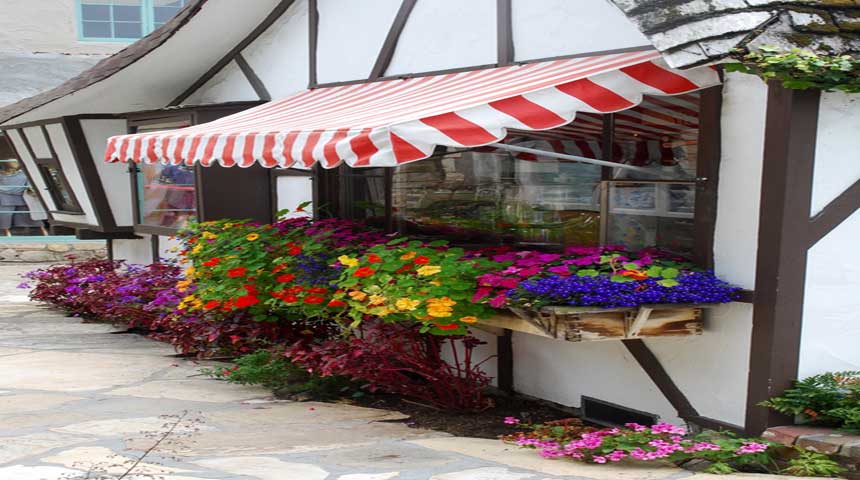
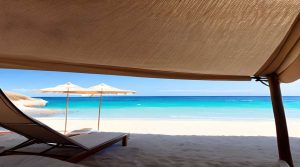
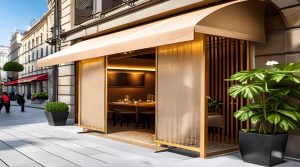
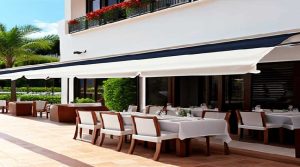

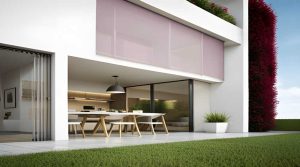
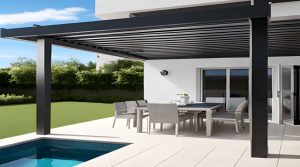
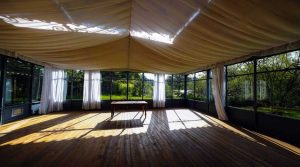
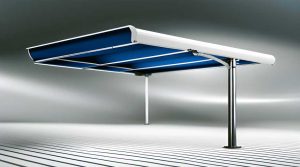
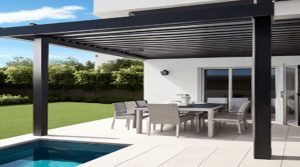

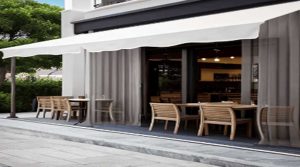
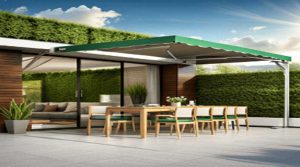
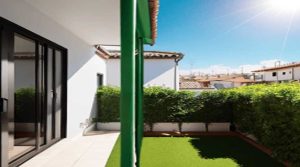
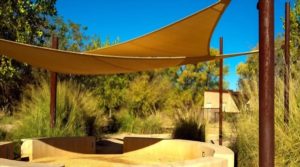
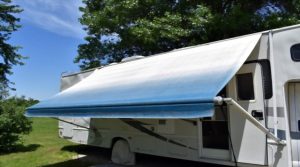
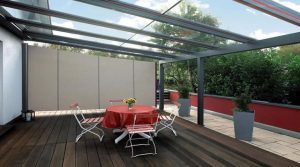
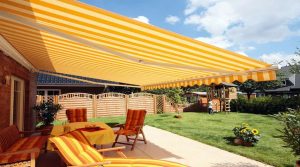
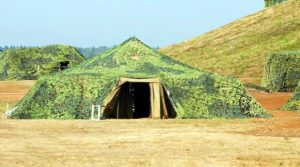
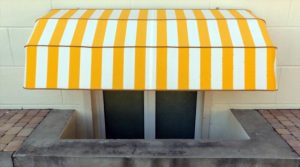
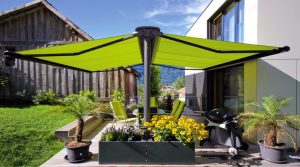
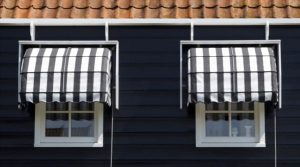
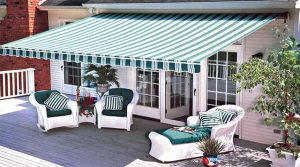
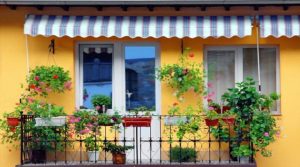
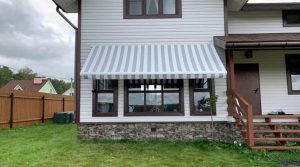
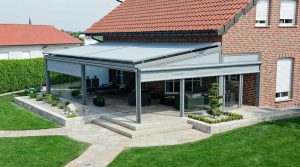
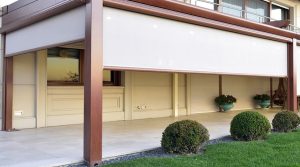
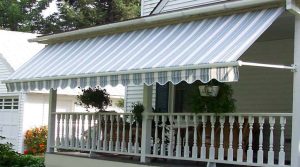
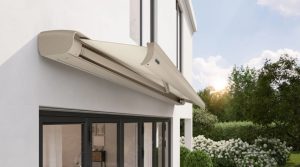
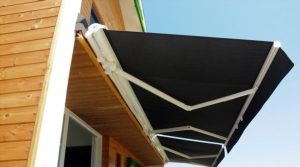
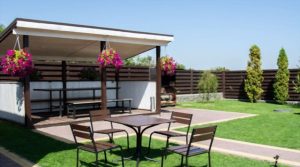
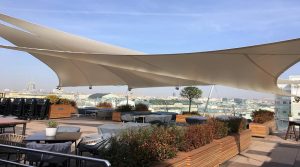
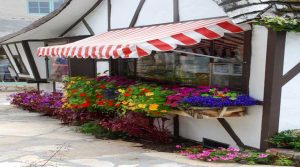
Buenos días Estimados,
Me llamo Martin Korn,
Estoy interesado en una compra de sus Toldos
Cantidad que necesito 300
los necesito 400x300Mt
Automatizados con sensor de viento y sensor de sol con la estructura en gris aluminio en tejido de alta calidad
Puedes ayudarme con estas cantidades
Y tambien si puedes enviarme su catalogo y precio
Gracias,
Hola Martin.
Respondido por privado.
Gracias.